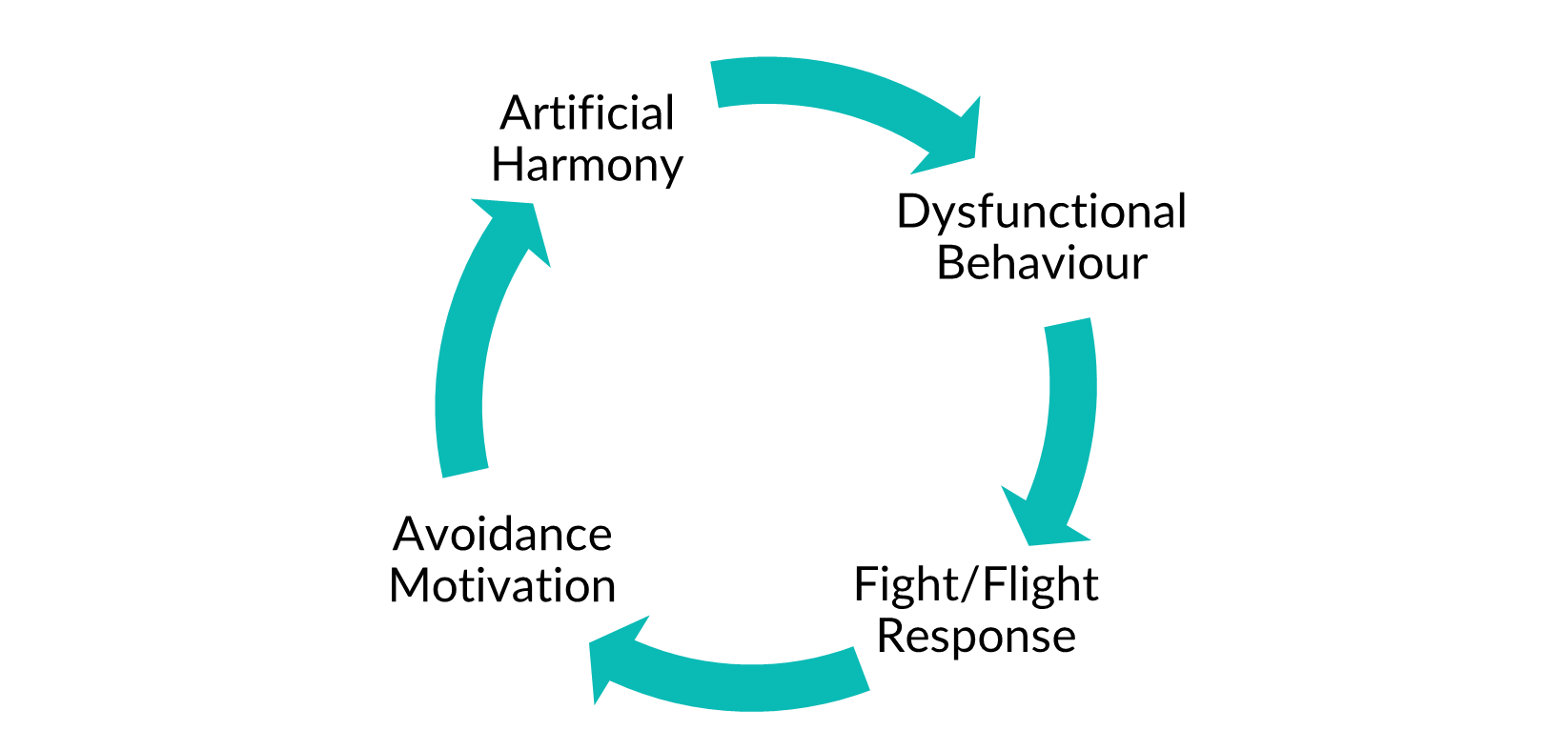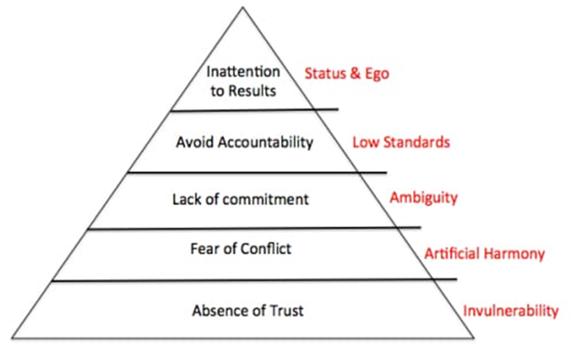Your Team Is Dysfunctional – It’s Ok…
Whether we like it or not, all teams are potentially dysfunctional.
Why? Because they are made up of fallible, perfectly-imperfect human beings – like you and me! And whilst each of us knows that working together and pulling in the same direction would help us accelerate progress and lift performance with less effort and drama, making it happen can feel impossible.
Because whilst it feels comfortable and rewarding to focus on our strengths, the reality is that we also need to address what’s holding us back and making us fragile – weaknesses or problems – in order to fully leverage our capacity and capabilities as a team.
The dynamics between team members naturally has an influence on progress and outcomes. Unfortunately, these dynamics can become ineffective when we feel that our needs to be seen, heard and connected are not being fulfilled and our ego comes into play to try and keep us feeling safe. The problem is, this can mean that the team becomes ineffective. I’ve seen this at play with teams I’ve personally led and with my clients over the years and it reflects what Patrick Lencioni suggests in his work on the 5 five dysfunctions of a team.
Lencioni identifies 5 five behavioural challenges, or dysfunctions, that teams must continuously work to avoid in order to function together well. They form a pyramid that needs to be developed from the bottom up in order to build trust, commitment and accountability.
Once these 5 potential dysfunctions are addressed, strengths can be leveraged to levels not reached before and progress and performance follows suite.
The challenge is that we don’t address the dysfunctions. We don’t go there.
And that’s because our brains are wired to avoid things that feel uncomfortable, and from my experience leading teams and in working with leaders who do, this work definitely feels uncomfortable!
Why?
Because our most powerful motivator is fear.
To ensure survival, our subconscious systems have evolved to balance our choices in certain ways. When we are motivated by fear of a perceived danger or threat, we want to move away from it. At one time this perceived danger may have been genuinely life-threatening such as a sabre-toothed tiger, but in a meeting or boardroom this ‘threat’ is more likely to be that we feel we are being ‘talked over’, ignored, or side-lined for an important project. In other words that one of our ‘needs’ – to be seen, heard and connected – are under threat. The things is, our brains process this kind of threat in exactly the same way as the existential one of the sabre-tooth tiger, and our reactions follow accordingly.
Psychologists call this desire to move away ‘avoidance motivation’. Avoidance reactions trigger the fight-or-flight response in our brain, which reduces our ability to think and process information, as well as our capacity for self-awareness and emotional regulation. And as we become more defensive, the brain’s heightened need for safety can lead us to misjudge situations and people as threats.
As you can imagine, in a team where there is a lot of this safety-driven ‘ego-play’ going on, our fight-or-flight response is triggered often, which creates an unhelpful cycle of avoidance that results in ‘artificial harmony’.

Artificial Harmony – the Barbie of Boardroom Dynamics
Typically, artificial harmony involves people ‘playing the game’ whilst in meetings because team members are reluctant to be vulnerable with one another, are unwilling to admit their mistakes, acknowledge their weaknesses or ask for help. A bit like the Barbie dolls I used to play with as a child, I call this ‘plastic fantastic’ culture, as it doesn’t reflect the mess and magic of real life and real people. And there is another, more dangerous side to artificial harmony – the lack of disagreement or debate, which has two critical consequences:
- People park their BMWs in the corridor (thanks to Cy Wakeman for that one!) as they Bitch, Whine and Moan through gossip, destructive commentary and sniping outside of the meeting rather than having the uncomfortable conversation in it.
- An echo-chamber of compliance is created that results in decisions become increasingly fragile as they lack the benefit of the diverse ideas, experiences and perspectives of the team.
Let’s Go There…
There’s lots of evidence to suggest that focussing on strengths feels good, takes less effort and moves us towards high performance more quickly. But that doesn’t mean we can avoid addressing issues. If there are dysfunctional dynamics in your team, there will be a limit to how far strengths will take you.
Research shows that most leaders spend around 80% of their time talking about problems, but I wonder if they’re having these conversations in the right rooms with the right people?
As leaders, we need to Go There. We need to stop avoiding the dysfunctions, face the uncomfortable truth that they are a natural part of human dynamics, and invest the courage, effort, and commitment to have the conversations that will address them.
When we do, we expand and elevate capacity, capability, progress and performance.
Helping unlock progress and performance by surfacing unhelpful dynamics and creating safe spaces for the right conversations is my thing, so if you’re ready and willing to Go There, I’d love to help.

Dr Paige Williams
International Speaker, Author, Mentor
Determined to help leaders move beyond just the need for resilience, Paige provides practical, evidence-based strategies for leaders to become antifragile, lead themselves and their teams to thrive and succeed in the Decade of Disruption.







